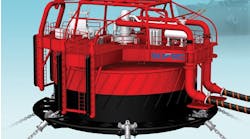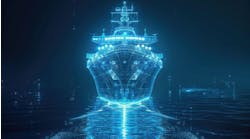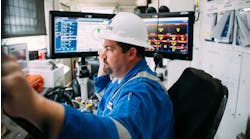Ensuring safety in the next era of offshore energy projects
By Erik Milito, National Ocean Industries Association (NOIA)
The offshore energy industry is entering a new era, marked by the integration of advanced technologies like digitization, automation and artificial intelligence. These innovations will help unlock new resource plays and technologies, making operations safer and more efficient than ever. This transformation is particularly evident in the deepwater Gulf of Mexico (GoM), where new projects are breaking ground, highlighting the industry’s commitment to safety as it advances into new frontiers.
The integration of advanced technologies has been transformative in recent years. Companies are deploying tools that automate and digitalize operations from the wellhead to the control room, designed to eliminate unplanned downtime, prevent failures, and autonomously overcome and recover from technical interruptions. These processes minimize human error, allowing smarter technologies to operate under human oversight.
The seamless operation of offshore oil and gas facilities is essential for safety and efficiency, and continuous improvement has been witnessed through the application of comprehensive safety management systems.
New Gulf of Mexico projects setting safety standard
A project supported by the National Academies of Sciences aims to improve offshore oil and gas operations in the GoM. Led by Argonne National Laboratory scientists, it uses the Success Path Method, which ensures ultra-complex systems function correctly by focusing on essential components. This method’s versatility makes it valuable across various industries, including the GoM energy sector.
In the deepwater GoM, new projects are advancing with innovative techniques. Reprocessed seismic data and 4D seismic technology help optimize well construction and monitor changes over time, improving efficiency and reducing surprises. Infrastructure-led exploration uses cost-effective subsea tiebacks to connect new fields to existing platforms, speeding up reserve access and enhancing safety with standardized designs.
Chevron’s Anchor project, which achieved first oil in August, exemplifies the industry's commitment to safety and efficiency. As the first deepwater high-pressure development to begin production, Anchor uses 20,000-psi subsea technology to tap into reservoirs reaching depths of 34,000 ft below the water’s surface. Chevron’s extensive technology development program for Anchor involved significant investment, rigorous testing and approval by the US Bureau of Safety and Environmental Enforcement. Additionally, the Anchor project has more than 14 million man-hours without serious injury.
Other HP/HT projects are also progressing in the GoM. Beacon’s Shenandoah Project and bp’s Kaskida Project, which recently reached its final investment decision, are poised to follow Anchor’s lead in safe and efficient deepwater development.
Carbon capture and storage initiatives
The offshore industry’s commitment to safety extends beyond traditional oil and gas projects. The US offshore energy industry is prioritizing safety in emerging energy segments, such as carbon capture and storage (CCS). Full-scale CCS developments are set to move forward over the next few years in the GoM, with companies focused on making these operations as safe as possible from design through construction and into operations. For example, in a collaborative process, companies are modeling the challenges of supercritical CO2 downhole in various well control scenarios and conducting material tests for CCS-enabled rig design to ensure safety from day 1.
Despite delays in US offshore CCS regulations, the industry is proactively addressing key safety issues and continues positioning itself for a future defined by innovation, safety and sustainability.
As the offshore energy sector embraces new technologies and continues to make the investments necessary to meet global energy demand for decades to come, its unwavering commitment to safety will continue to set the standard for operational excellence. From deepwater projects in the GoM to the emerging CCS initiatives, the industry is meeting today’s demands as well as paving the way for a secure and sustainable energy future.




